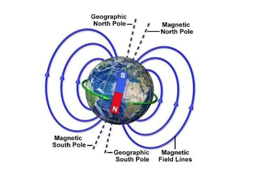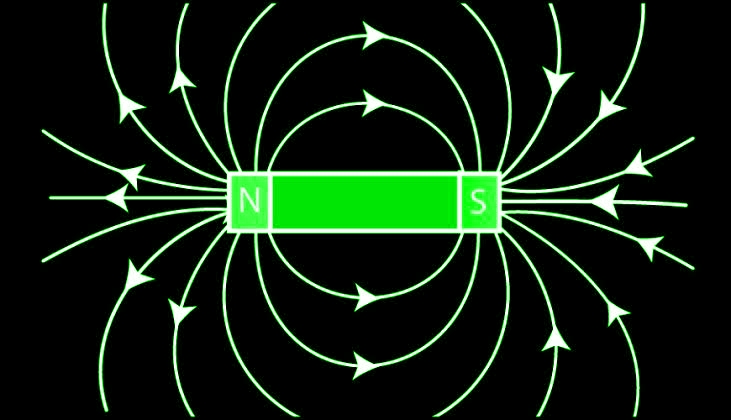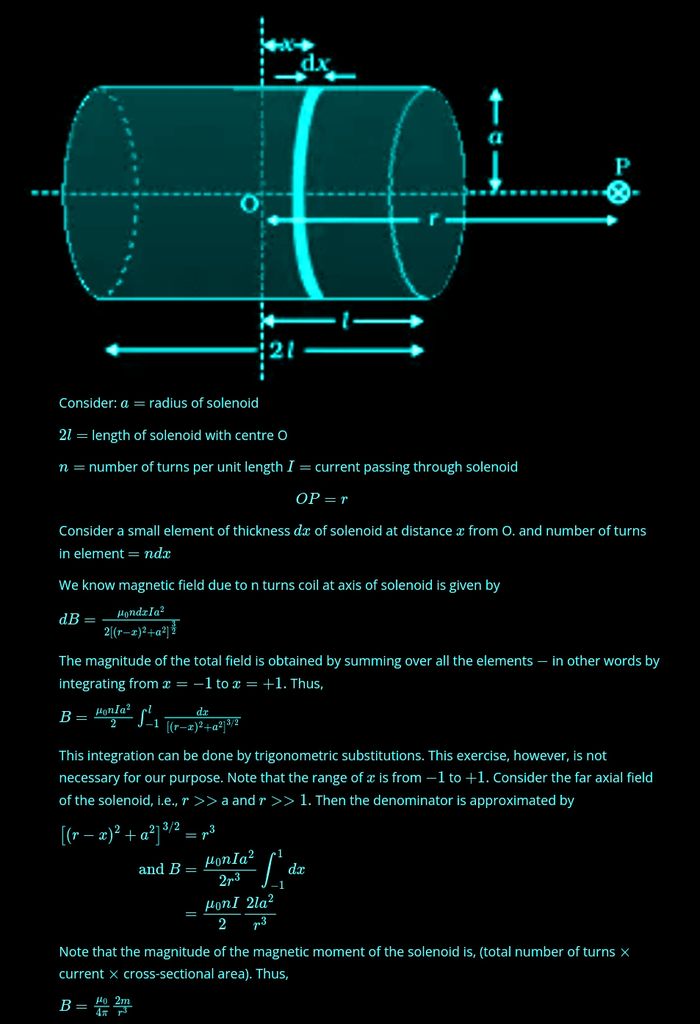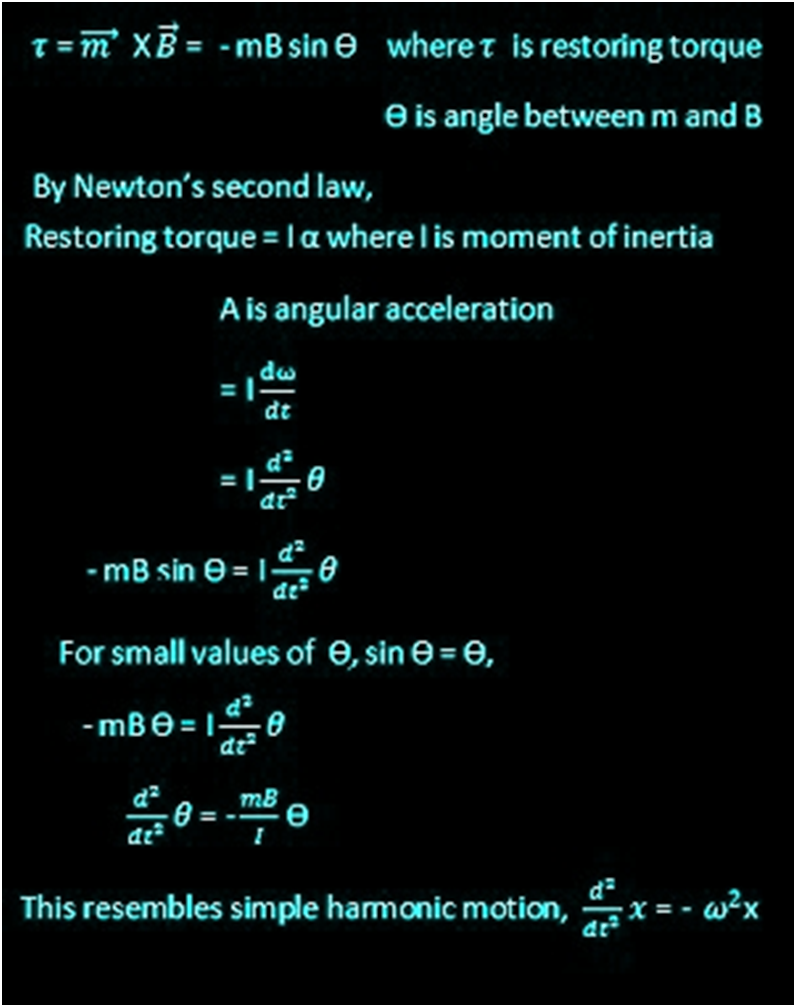1.Magnetism and Gauss’s Law
- Books Name
- Physics Book Part l and ll
- Publication
- Grow Career Publication
- Course
- CBSE Class 12
- Subject
- Physics
Chapter 5: Magnetism and Matter

THE BAR MAGNET
A bar magnet is a rectangular piece of an object, made up of iron, steel or any other ferromagnetic substance or ferromagnetic composite, that shows permanent magnetic properties. It has two poles, a north and a south pole such that when suspended freely, the magnet aligns itself so that the northern pole points towards the magnetic north pole of the earth.

Types of Bar Magnet
There are two types of bar magnet:
- Cylindrical bar magnet: A cylindrical rod is also known as rod magnets that have a thickness equal to larger than the diameter enabling high magnetism property.
- Rectangular bar magnet: Rectangular bar magnets find applications in manufacturing and engineering industries as they have magnetic strength and field greater than the other magnets.
Bar magnet as an equivalent solenoid
A solenoid is a coil with a length greater than its diameter and is a type of electromagnet to produce controlled magnetic fields by passing an electric current through it.

The dipole in a uniform magnetic field
Take a compass with known value of magnetic moment m and moment of Intertia I . Allow the needle to oscillate in a magnetic field of value B.
The torque on the needle is given by

MAGNETISM AND GAUSS’S LAW
Gauss' Law for magnetism applies to the magnetic flux through a closed surface. In this case the area vector points out from the surface.
Because magnetic field lines are continuous loops, all closed surfaces have as many magnetic field lines going in as coming out. Hence, the net magnetic flux through a closed surface is zero.
Net flux = ∫ B • dA = 0
∫E⋅dA=Q/ε0
Where,
- E is the electric field vector
- Q is the enclosed electric charge
- ε0 is the electric permittivity of free space
- A is the outward pointing normal area vector
2.Magnetisation and Magnetic Intensity
- Books Name
- Physics Book Part l and ll
- Publication
- Grow Career Publication
- Course
- CBSE Class 12
- Subject
- Physics
MAGNETISATION AND MAGNETIC INTENSITY
Mathematically,

Let us take a solenoid with n turns per unit length and the current passing through it be given by I, then the magnetic field in the interior of the solenoid can be given as,
![]()
Now, if we fill the interior with the solenoid with a material of non-zero magnetization, the field inside the solenoid must be greater than before. The net magnetic field B inside the solenoid
![]()
Where Bm gives the field contributed by the core material. Here, Bm is proportional to the magnetization of the material, M
![]()
Here, µ0 is the constant of permeability of a vacuum.
Let us now discuss another concept here, the magnetic intensity of a material. The magnetic intensity of a material can be given as,
![]()
From this equation, we see that the total magnetic field can also be defined as,
![]()
Here, the magnetic field due to the external factors such as the current in the solenoid is given as H and that due to the nature of the core is given by M.
![]()
![]()
Here, the term µr is termed as the relative magnetic permeability of a material, which is analogous to the dielectric constants in the case of electrostatics. We define the magnetic permeability as,
![]()
MAGNETIC PROPERTIES OF MATERIALS
Magnetic materials are classified into three categories, based on the behaviour of materials in the magnetic field. The three types of materials are diamagnetic, paramagnetic and ferromagnetic.
Intensity of magnetisation (I)
The electrons circulating around the nucleus have a magnetic moment. When the material is not magnetised the magnetic dipole moment sum up to zero.
Coercivity
The coercivity of a material is the ability to withstand the external magnetic field without becoming demagnetised.
Retentivity
The ability of a material to retain or resist magnetization is called retentivity.
Magnetic Field (H)
The magnetic field produced only by the electric current flowing in a solenoid is called the magnetic intensity.
Magnetic susceptibility
When a material is placed in an external magnetic field, the material gets magnetised. For a small magnetising field, the intensity of magnetisation (I) acquired by the material is directly proportional to the magnetic field (H).
I ∝ H
I = χmH , χm is the susceptibility of the material
PERMANENT MAGNETS AND ELECTROMAGNETS
Permanent Magnet
1. Flexible Magnets: They are utilised in refrigerator door seals. Rubber polymers, plastics, and magnetic powders can all be used to create them.
2. NdFeB (Neodymium Iron Boron Magnet): These are rare earth magnets. It’s fairly simple to oxidise. It’s a high-priced substance. It’s frequently used in jewellery making, bookbinding, and other crafts.
3. A permanent magnet’s magnetic field can only be created below a particular temperature. As a result, these magnets aren’t suitable for use in hot-device applications.
4. Hard drives, motors, vehicles, generators, TVs, phones, headphones, speakers, transducers, and sensors all require permanent magnets. A magnet’s most common purpose is to attract other magnetic things, but it also serves a variety of tasks in electrical devices.
5. The majority of speakers use a permanent magnet that interacts with a wire coil (an electromagnet, really). The audio signal travels along the cable and causes the speaker to move. The speaker creates sound by moving air.
Electromagnet
1. Resistant electromagnets: This sort of magnet uses copper wires to create a magnetic field. The magnetic field is created when the copper wire is twisted around a piece of iron and an electric current is sent through the copper wire. The stronger the field, the more copper wires are twisted.
2. Hybrid electromagnets: They are a mix of the two types of electromagnets mentioned above, resistive and superconductor electromagnets.
3. Electromagnets require a constant current source. Due to numerous variables such as ohmic heating, inductive voltage spikes, core losses, coil coupling, and so on, this may impact the magnets and their field at some point in the future.

 Madhava Publications
Madhava Publications
 Grow Career Publication
Grow Career Publication
